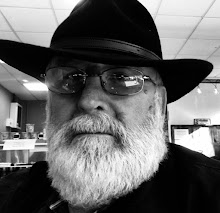Write about a moment in which I knew I was in touch with truth..... Self-reflect upon what I believe truth is. Investigate areas in my lif...
As we start the journey of attempting to move forward on the path towards studying our condition
Author: Fraser Trevor
Rating 5 of 5 Des:
As we start the journey of attempting to move forward on the path towards studying our condition , different parts of us are re-energis...
Everyone is intuitive . 'Intuitive Voice' means restoring communication with our child within
Author: Fraser Trevor
Rating 5 of 5 Des:
Everyone is intuitive . 'Intuitive Voice' means restoring communication with our child within, so it’s really the ancient language o...
The definition of abuse is simple
Author: Fraser Trevor
Rating 5 of 5 Des:
The definition of abuse at recovery in Ten STAGES is simple: whenever our spirit is disrespected we are abused. Abuse of the spirit ca...
When we reach and make the decision to study The Ten Stages we have become very proficient at dissociating.
Author: Fraser Trevor
Rating 5 of 5 Des:
When we reach and make the decision to study The Ten Stages we have become very proficient at dissociating. We do not question WHY we wou...
Rebelle Recovered is the empowerment model with a holistic approach to overcoming dissociation
Author: Fraser Trevor
Rating 5 of 5 Des:
Rebelle Recovered is an evolving twelve week taught course of study the ten stages and the child within which is based on an empower...
REBELLE RECOVERY stage TRUST AND CONSENT
Author: Fraser Trevor
Rating 5 of 5 Des:
REBELLE RECOVERY stage TRUST AND CONSENT on our healing program our contest stage. This is a pre-program stage of grandiosity, acceptance...
Rebelle Recovered is designed to bring practices of mindful awareness to us who have suffered from addictive trappings and tendencies of our mind.
Author: Fraser Trevor
Rating 5 of 5 Des:
Rebelle Recovered is designed to bring practices of Kindful awareness to us who have suffered from the addictive trappings and tendenc...
What works? Who does it work for? and How can we help it work better?
Author: Fraser Trevor
Rating 5 of 5 Des:
Rebelle Recovery is a wholistic approach to overcoming addiction that views people in their wholeness– mind, body and spirit. A fundament...
The Four Agreements
Author: Fraser Trevor
Rating 5 of 5 Des:
The Four Agreements Be Impeccable With Your Word: Speak with integrity. Say only what you mean. Avoid using the word to speak against ...
Recovery is experienced as our own personal dialog with our child within
Author: Fraser Trevor
Rating 5 of 5 Des:
Recovery is experienced as our personal dialog with that child within that each of us can accesses multiple times a day. The more that r...
We are not looking for followers
Author: Fraser Trevor
Rating 5 of 5 Des:
We are not looking for followers, we are students seeking contact with our child within in a safe judgment free forum. This is not a plac...
We are in the pilot’s seat of our recovery. our stager guides are our co-pilots
Author: Fraser Trevor
Rating 5 of 5 Des:
We are in the pilot’s seat of our recovery. our stager guides are our co-pilots; our children within are our wings.our re-contacted chil...
Recovery in Ten Stages It’s not that we aren’t intuitive – it’s that we are scared of our intuition.
Author: Fraser Trevor
Rating 5 of 5 Des:
In recovering in Ten Stages we always go with the choice that scares us the most, because that's the one that is going to require th...
Women are the fastest-growing segment for substance abuse
Author: Fraser Trevor
Rating 5 of 5 Des:
Women are the fastest-growing segment for substance abuse . Even more frightening is that the majority who need treatment do not receiv...
Woman, the living creature, the creating individual
Author: Fraser Trevor
Rating 5 of 5 Des:
Woman, the living creature, the creating individual, is always more important than any established style or system Related article...
Popular Posts
-
Rebelle Recovered is an evolving twelve week taught course of study the ten stages and the child within which is based on an empower...
-
When we reach and make the decision to study The Ten Stages we have become very proficient at dissociating. We do not question WHY we wou...
-
Everyone is intuitive . 'Intuitive Voice' means restoring communication with our child within, so it’s really the ancient language o...
-
The definition of abuse at recovery in Ten STAGES is simple: whenever our spirit is disrespected we are abused. Abuse of the spirit ca...
-
Women are the fastest-growing segment for substance abuse . Even more frightening is that the majority who need treatment do not receiv...
-
As we start the journey of attempting to move forward on the path towards studying our condition , different parts of us are re-energis...
-
Rebelle Recovered is designed to bring practices of Kindful awareness to us who have suffered from the addictive trappings and tendenc...
-
Recovery is experienced as our personal dialog with that child within that each of us can accesses multiple times a day. The more that r...















